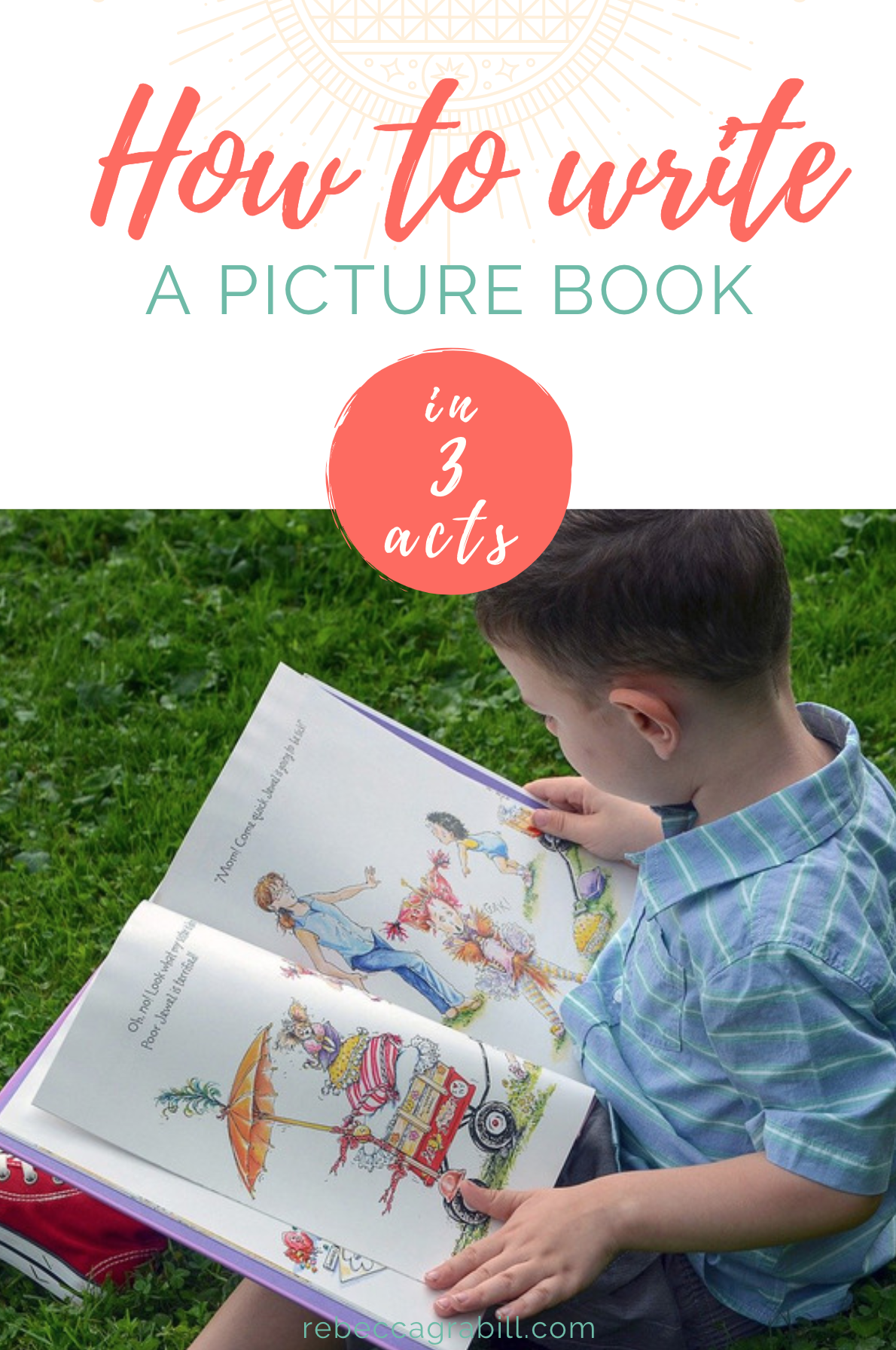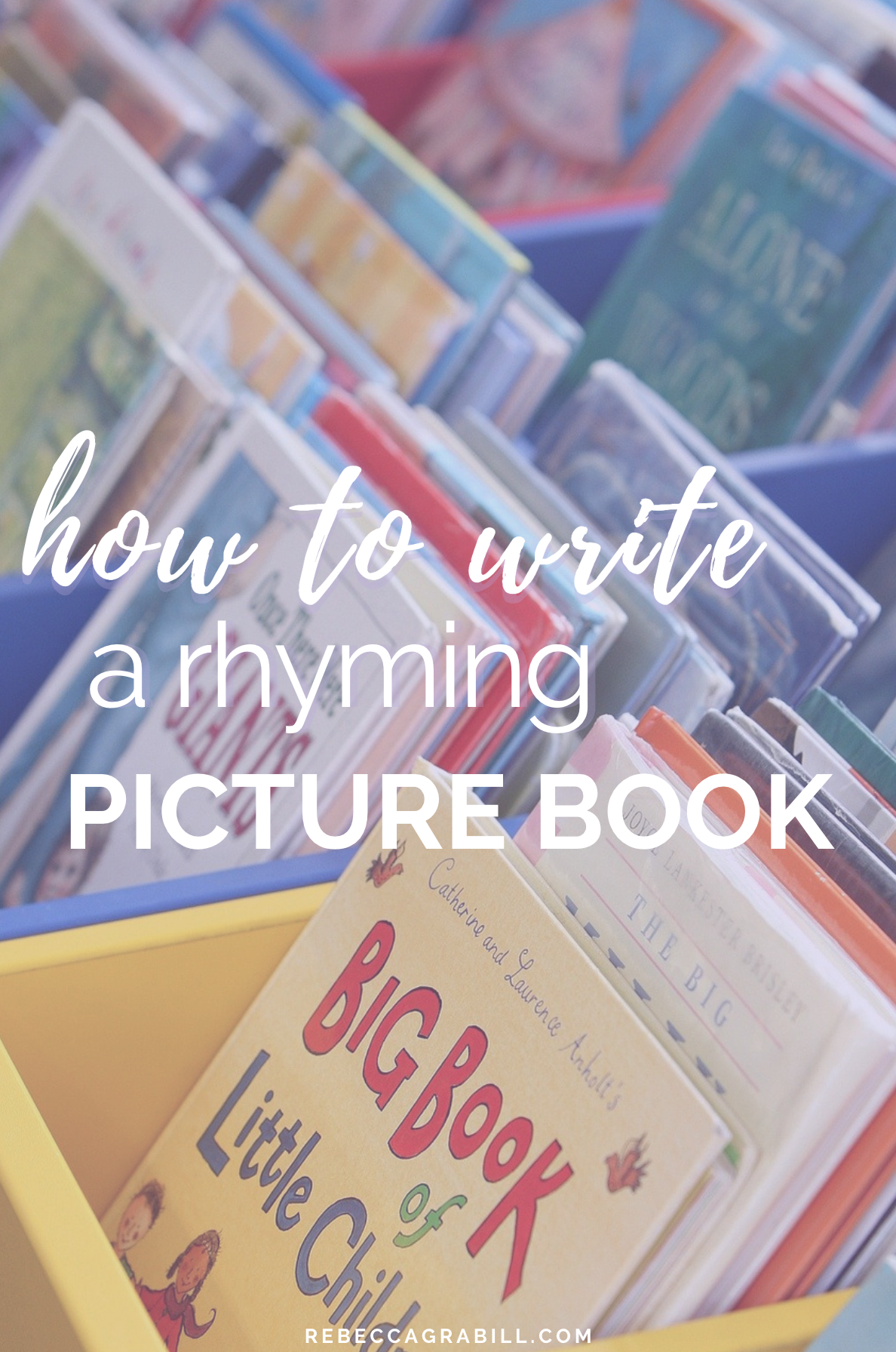Lessons in Rhyme: How to Write a Rhyming Picture Book
In the past fifteen years I’ve read a staggering number of rhyming picture books, and some I’ve read an absurd number of times. I can recite Goodnight Moon in my sleep, and lines from Green Eggs and Ham pop into daily conversation. I’ve found that certain rhyming books are a delight to read for the first, fifth, five hundredth time. While others, when plopped in my hands by an eager child, make me suppress a groan. Some books have been so loathed, I’ve (shamefully) allowed the children to use them as coloring books, while others are so adored I can’t part with them despite covers worn to tatters. So, I set out to study what elements might be common to my most-loved rhyming texts, and how I, as a writer, might use these elements in my own work.
I believe four key elements unite the best of the best rhyming picture book texts: Structure, Speech, Surprise, and Story. Books that fail will be lacking in one (or more) of these key areas; those that succeed will demonstrate at least passing-grade competence in all four. Now to examine these elements more closely.
Structure: The most undervalued tool in the poet's toolbox
Structure or form is, I believe, the most undervalued tool in the poet’s toolbox. Perhaps because it takes a terrible amount of plain, hard work, and in our culture of self-expression, freedom and individuality (not to wax philosophical), the thought of forcing one’s words into regular rhythm and end rhyme may feel like a violation of nature (which is very much false, but that’s another essay). Yet it can be done, and when it’s done well, it can be a marvelous and beautiful thing.
Take The Spider and The Fly as a fine example. Howitt uses rhyming couplets with regular meter to masterful effect. I’ve marked off the meter of first stanza of her poem (bold indicating stress) as a reader might casually read aloud:
“Will you walk into my parlor?” said the Spider to the Fly,
“’Tis the prettiest little parlor that ever you did spy;
The way into my parlor is up a winding stair,
And I have many curious things to show you when you are there.”
Howitt begins the first stanza with the three-syllable anapestic foot, roughly repeating the pattern for three more feet, but cutting the last foot short to end on a stressed syllable. The final two lines begin with the two-syllable iambic, building tension by shortening the line, but again repeat the anapestic to make a two-then-three-syllable pattern that is repeated. Every line ends on a stress, thus carrying the reader on into the next line and, ultimately, the next stanza. And this pattern is continued throughout the poem, yet without torturing the reader with horrid syntax or strained rhyme.
And what may appear nothing more than unstructured and rowdy romps, Chicka Chicka Boom Boom and Rattle Trap Car are also bound by form. Though less formal than Howitt’s poem, and only rhymed in places, the rhythm is regular and consistent, which reminds me of Eve Merriam’s Inside a Poem, “It doesn’t always have to rhyme/but there’s the repeat of a beat somewhere.”
Dialogue helps a book feel more fully developed
Speech is another element I found in my most-favorite books. The characters talk, and while they sometimes talk in rhyme, that dialogue is always natural in rhythm and diction. Some of my favorite rhyming speech is done by Teresa Bateman. This passage from April Foolishness demonstrates her skill:
“Grandpa, oh Grandpa!
The Pigs broke the gate!
They’re in the tomatoes!
Oh, hurry—don’t wait!”
“Imagine,” said Grandpa.
I’m really quite shaken.”
He reached in the fridge,
and he got out the bacon.
Here Bateman has a little dramatic irony (Grandpa clearly doesn’t believe there’s a problem with the pigs) and the rhyme fits nicely, using words that are natural to each speaker. Look, too, at the opening to Plump and Perky Turkey:
“A plump and perky turkey’s
what we need,” the all agreed.
“But finding turkeys nowadays
is very hard indeed.”
Not only is the language natural, the vocabulary and phrasing are unique to the speaker. Even in rhyme, Bateman’s characters have distinct voices, and nowhere does she sacrifice graceful syntax for the sake of the rhyme.
Arnold Lobel’s The Frogs and Toads All Sang and Hoberman’s The Seven Silly Eaters make good use of dialogue as well, while Mrs. McNosh Hangs Up Her Wash does not use any. The ultimate effect for McNosh is a book that feels slight. Dialogue helps a book (any book) feel fully developed; it moves a story told in rhyme beyond mere verse.
Surprise in unique and unexpected language is essential for good rhyme
The third element is that of Surprise. Not surprise in storyline, but rather in unique and unexpected language, particularly in the words chosen for rhyming. Jez Alborough’s Fix-It Duck earned a mixed review. Many rhymes are commonplace, mundane, thoroughly predictable. Take gap/tap and eye/dry and thin/in. But a few rhyme pairs surprise; curve rhymed with swerve for example is fun and unexpected. Batemen, however, finds stunning rhyming pairs and works them in so naturally that reading her work is a delight. Just a few examples: depressed/guest, agreed/indeed, thought/pot, jamboree/tree, collage/camouflage. Fabulous vocabulary that Bateman works in beautifully.
Rhyme is the car, story is the road
Finally, Story. While form may be undervalued, story is the element most neglected in a rhyming text. Rhyme is the car, story is the road. I can have the most souped-up, tricked-out vehicle ever made, but if my road is full of potholes and washouts nobody is going to enjoy the ride. I think rhyming texts are bound by the same “rule” as any work: every line must drive the story forward. If a line exists only to provide an end rhyme, it’s wasted.
The subtlest, but I believe best example of story is The Seven Silly Eaters. The story follows the birth and growth of Mrs. Peters’ seven fussy eaters, each of whom will eat only one very specific (and labor intensive) item. Below is the introduction of Mrs. Peters’ third child, Jack. At this point in the story she’s already fixing warm milk for Peter and pink lemonade for Lucy.
Now Lucy grew and Peter grew
Till he was three and she was two.
And who was one? Why, little Jack
With eyes so brown and hair so black—
A happy baby, never cross,
But all he’d eat was applesauce.
Peeling apples by the pound,
Mrs. Peters faintly frowned.
She’d take the apples from the shelf
And murmur weakly to herself,
“What a silly bunch of eaters
Are Lucy, Jack, and Peter Peters.”
And it only gets worse from there. By the time all seven children are born, Mrs. Peters has added to temperate milk, lemonade and applesauce, lumpless oatmeal, homemade bread, and poached and fried eggs. Prepared fresh each and every day.
This text works on so many levels. First I have character development—the children physically age, but I also get a sense of each child’s personality. And Mrs. Peters changes as well. Early in the book she greets her children’s persnickety habits with a chuckle and, “What a silly sort of eater is my darling baby Peter,” which changes to a frown as shown above, and finally becomes, “She wiped her brow and heaved a sigh; another year was passing by ... Drearily she shook her head and wearily went up to bed.” Hoberman powerfully shows us that while the little Peters are just as dear, Mother is near her breaking point. Just in time, her children solve the problem, not only of their fussy eating, but of their mother’s fatigue. And all with playful rhyme and regular rhythm. This book illustrates that not all forward movement is plot. Although plot is central, deepening character and establishing setting are also vital and valid reasons to include a rhyme or two.
Photo from grabillcreative.com
What a daunting challenge. To write a solid story with engaging vocabulary, delightful characters, unique voices, is hard enough. But then to shape it into a rigid form? Clearly, it is possible and well worth the effort. But the truth is, the majority of books flounder between success and failure, where a little more thought given to surprising rhyme, a little more honing of story arc or rhythm could have pushed the book from mediocre to wild success. In any case, Steve Kowit in his poetry handbook, In the Palm of Your Hand, gives a succinct and inspirational lesson in rhyme.
Rhyme used well can charm the reader, but good poets don’t sacrifice real insight or graceful phrasing to come up with rhymes. Sloppily used, rhyme can be fatally destructive to a poet’s intentions .... (39)
And so, even if my goal is foolishness, as Bateman’s is in April Foolishness, Kowit’s reminder is an important one. Grace, insight, smooth writing, story, all trump end rhyme. Every time.
Some affiliate links used in this post.











I started the first semester of graduate school knowing just a little more about picture books than I do about worms. Children love them, they come out on rainy days, and if you cut them in half, they really do die. Here I’ll share what I discovered about creating picture books with meaning and beauty.